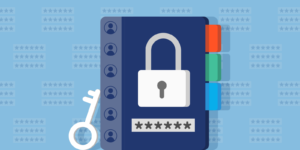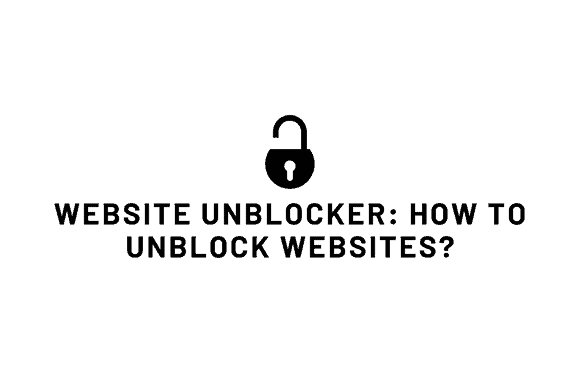Website unblocker: It’s not surprising that year over year, the justifications for restricting access to more and more websites grow. Governments in many countries deliberately restrict internet access, forcing citizens to avoid widely used sites like Facebook and Twitter. People in similar situations are forced to visit local websites at school or work.
In this article, we’ll go through several easy workarounds that allow you to visit blocked websites like with a website unblocker. VPN, extensions, website unblocker, DNS hacking, and proxy websites are all examples of easy and effective methods. Similarly, some of the most effective strategies for unfettered access to blocked websites are as follows.
Be aware that it may be against business policy to allow access to any websites prohibited from the office (or school) network. Therefore, in these cases, filter bypass is not something we advise.
Website unblocker: How To unblock websites?
There are various ways to access restricted content online, but we have selected the most user-friendly and safe options.
Use VPN for unblocking online
As the name suggests, VPN (Virtual Private Network) software acts as a shield to hide your true Internet Protocol address. When you connect to a Virtual Private Network, your data is sent to a server in a location where your government or ISP has not filtered it.
Our research and reviews have shown that using a trusted VPN provider is the most effective approach for bypassing regional restrictions on content access. The most well-known VPNs offer clients for all the most popular operating systems, making it easy to bypass censorship at school or work.
If you’re looking for a VPN service, here are some of the best options:
- PIA (Private Internet Access)
- ExpressVPN
- NordVPN
It is possible to use free VPN services to access restricted content if security is not a top concern.
Website Unblocker: Use Proxy Websites
Video streaming sites, social media platforms, and sometimes even personal email might be blocked by your employer if you’re at the office. In cases where access to a certain website is restricted for any reason, a website unblocker might be used as a last resort.
Keep in mind, though, that a VPN offers more security than an unblocked proxy. Therefore, option 1 is preferable if you want to conceal your occupation.
The Internet is rife with proxy servers that can bypass censorship. An Internet service provider (ISP) will not be able to tell that you are accessing a restricted website when using a proxy server.
An institution’s firewall may prevent you from accessing Facebook, but you can still log on if you know the proxy site’s URL.
- Smartproxy.com
- Hidemyass.com
- Spysurfing.com
Use IP Rather Than URL
Most of you probably already know that an IP address is part of every website’s URL; therefore, it’s possible that the censoring government merely saved the URL instead of the IP. In this case, you can use the IP address of a website to bypass Chrome’s content restrictions.
- At the Windows command prompt, type tracert websitename.com to find the domain’s IP address.
- On a Mac, you may find a site’s IP address by opening Network Utility, clicking the Traceroute tab at the top, and entering the domain name.
- Traceroute apps exist in both Apple’s App Store and Google’s Play Market.
- To find the IP address for a website, type “dig websitename.com” into the Linux Terminal.
Access blocked sites in Chrome
It’s also conceivable that you or another user have blocked a particular page in Chrome. To solve this problem, you need just take a few easy actions to adjust your system’s settings so that you may visit the offending website.
Chrome users can access blocked content by entering the URL of the restricted site and clicking the corresponding icon that appears to the left of the address bar. You can change the blocked status by clicking and going to Site settings.
Use Google Translate
On rare occasions, Google Translate is not banned by institutions or governments. Most likely, this is because it is a teaching aid, and hence nobody thinks it is effective enough to bypass firewalls at work or school. You can get around the block by using this application to translate the restricted website into a language you already know.
Using Google Translate, copy the URL, paste it into the search bar, and then select the translated URL.
Bypass censorship via Website Unblocker Extensions
Try these add-ons if the blocked sites are dynamic, like Facebook or YouTube. Extensions like Hola and ProxMate for Chrome and other browsers allow users to view the blocked content. One such add-on is UltraSurf, which provides unrestricted web access through a private, encrypted proxy network. It can break through protected networks.
Replace your DNS Server (Custom DNS)
This strategy has been detailed in further detail in a previous section labeled “DNS Hack.” Using this method, you can easily get around the problem. This method usually includes switching your internet provider to Google DNS or OpenDNS. Listed below are the steps that need to be taken.
According to Cloudflare, their 1.1.1.1 DNS service is the quickest and most privacy-conscious in the industry. Also, Cloudflare’s 1.1.1.1 DNS service is now available through mobile apps for both Android and iOS. This one-click workaround for gaining access to otherwise prohibited content on the web is one I find myself doing quite often.
Go to Internet Archive — Wayback Machine
Intriguing as it may be, Wayback Machine is a service that stores copies of nearly all web pages. It saves many website versions so that you can view back-in-time pages. It also allows users to view prohibited websites and material.
Accordingly, the Wayback Machine has your back even if a company or website goes out of business. Moreover, the Internet Archive offers many different movies, documentaries, classic video games, ebooks, and more for no cost whatsoever.
Use the RSS Feed of the website
RSS readers help get and read content that is often updated. An RSS feed for the website is available; you can get it and add it to your reader. If you have access to a local website, you may access it through an RSS reader that allows you to load an entire web page on top of its user interface.
Use TOR (The Onion Router)
You may be familiar with the wildly successful Tor browser if you are an advocate for privacy. This can potentially be a web filter-avoiding device if set up properly. You can often unblock work or school sites without paying attention to yourself. An additional perk is that it would be possible to do away with all monitoring forms.
The Onion Router (Tor) is the third-best option for unblocking sites after VPNs and proxies. It’s also a portal to .onion sites, which are inaccessible via the regular Internet.
Tip: To further strengthen your computer’s security, you can also choose the devastating combination of TOR and VPN, which includes bypassing site filters. Onion Over VPN is an extra layer of security provided by many VPNs like NordVPN and ExpressVPN.
Other uncommon methods to unblock websites online
You can use the following alternative methods if you need to access a blocked website. However, in some outlying cases, the results won’t look like the real location.
Switch internet network
Dynamic IP addresses, subject to periodic modifications, are what the vast majority of ISPs provide to their customers. A website proprietor may have blocked your IP address for security reasons. Restarting your Wi-Fi router can compel your ISP to assign you a new IP address and access the restricted site.
Using your private mobile network is another simple way to get around restrictions imposed by your network administrator. While not foolproof, this plan is a much better (and legal) alternative to flouting company policy.
Use HTML to PDF converter
With SodaPDF, you may save any web page to your computer without visiting the site. Open this link and paste the questioned URL into the box. All there is to it. Several additional strategies exist for evading web filters using HTML to PDF converters.
To email the unblocked site, some services demand your URL. You can bypass network restrictions, and access blocked content quickly and easily.
Use Firefox from a USB drive
I wouldn’t be surprised if you weren’t allowed to install browser extensions to access restricted websites for personal use if your school or company is known to limit site access. A USB stick with a portable web browser like Firefox can be useful in this situation. Add in an unblock proxy service you can trust, and you’ll be all set.
URL recasting method
Sometimes, a VPN-hosted site won’t have an SSL certificate set up. To access these sites securely, you should enter https://www.url.com rather than www.url.com or https://www.url.com in your browser’s address bar. This change may trigger a security notification. View the site by clicking the link to “Continue Anyway.” The approach is not foolproof, although it may prove valuable at times.
Change Network Proxy In Browsers
Your school or university may use more than one network proxy. In light of this, some sites may be restricted by one proxy but accessible by another. If your school blocks access to certain sites, you can use a proxy to view them.
Turning it off is a simple process if you don’t want your web browser to use a proxy server. You need to look in your browser’s settings for a category labeled “connections” or “network.” You’ll have the choice to employ a proxy that restricts your school’s network access or use no proxy at all.
Some simplest and most effective methods exist for bypassing filters and accessing restricted websites. Get in touch and tell us whatever strategy you use to bypass regional restrictions on the Internet.



